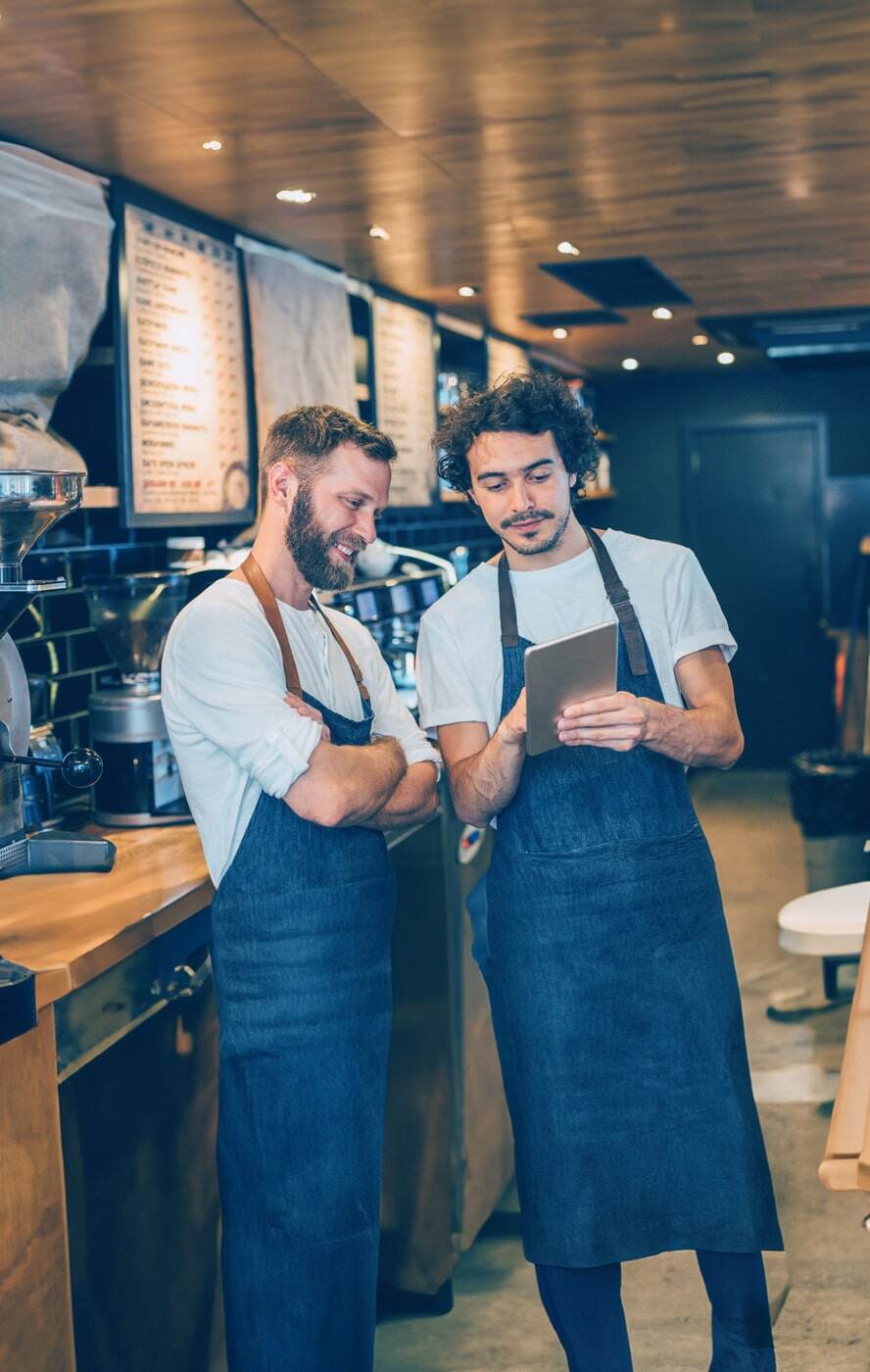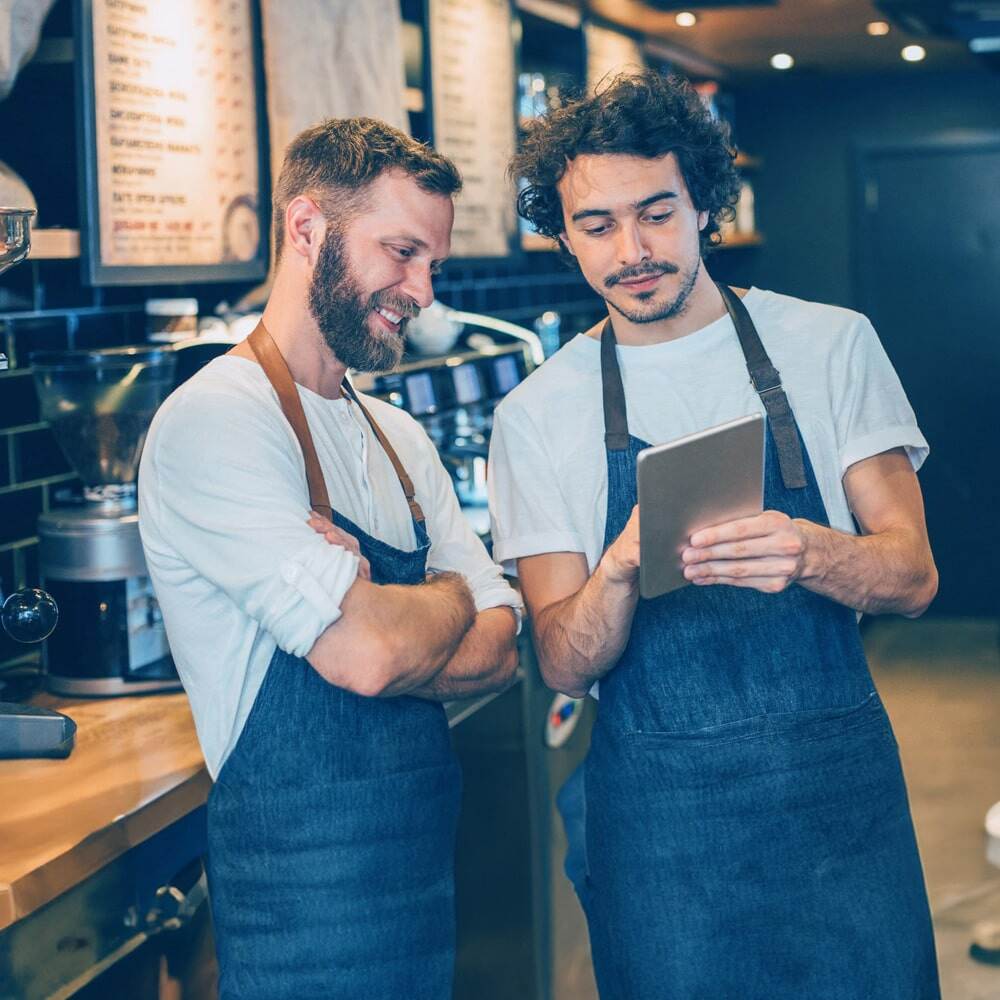Food and drinks? Yes.
Digital interface? No.
Restaurants haven't yet found a taste for digitization.
While digitization is already a top priority in many industries, indispensable for future success, it has long been seen as an unnecessary, expensive alternative in the restaurant industry. After all, restaurants are about hospitality, conviviality, and enjoyment. And for that, personal contact is needed, not computers.
In recent years, however, the wind has shifted and has been blowing strongly from behind since Covid-19. More and more restaurants are turning to digital solutions such as checkout and reservation systems. They have realized that they do not worsen the guest experience, but improve it; do not make reservations and payment more difficult, but simplify them; do not leave less time for guests, but more; do not make relationships with guests more impersonal and wither away, but strengthen them in the long term; and also do not receive fewer, but more guests in the restaurant.
The first generation of restaurant management systems: The 24/7 host
The possibilities of digitization are rarely exploited to this day. There are several reasons for this. For one thing, restaurateurs, servers, and kitchen staff are not typically IT-savvy. Many don't know what is possible, how easily many different solutions can be implemented, how much time and thus costs can be saved, but also how significantly sales can be increased. The costs for hardware and software, setup and training may seem high at first. However, the potential for savings and increased sales is many times greater even for average companies - the bottom line is a big plus even in the first year. In any case, if digital projects are financed by the state, as is currently the case in Germany within the framework of Corona Überbrückungshilfe III.
Use Case: No-Show - Digital Solutions
Just one example: In cities, a no-show rate of 20% is common; guests don't show up at all or show up in smaller numbers. With 60 seats, a table of 4 or 6 can quickly remain empty. At 50 Euro per guest, this makes 200-300 Euro loss of sales per day, 1000-1500 Euro per week, 4000-6000 Euro per month, 48000 to 72000 Euro per year.
Costs for preparation and goods are added on top. Even if you calculate with less no-shows or turnover: That's a lot of money. But it doesn't have to be this way! With online reservation systems, the no-show rate can be reduced to practically 0%, e.g. if no-show fees are pointed out at the time of reservation and credit card details are requested. Just announcing no-show fees combined with an automatic reminder email with links for confirmation, change, and cancellation of the reservation lowers the no-show rate to 1-2% - and without any additional effort.
Restaurant management systems automate routine tasks, making life in the restaurant business easier and more profitable. For restaurateurs as well as for guests. Online reservations replace phone calls. Service is no longer constantly interrupted by phone calls. Guests can now instantly see if or when seats are available at any time and make reservations immediately.
Once set, when how many guests reserve and how long they can stay, optimal utilization with smooth processes is automatically achieved. No long waits, relaxed service, perfect timing in the kitchen - this is what the perfect guest experience looks like.
These are just a few examples, numerous features further facilitate the work, such as graphic table plans, automatic e-mails to remind guests of upcoming reservations, classify guests for target group-oriented marketing and even more courteous service.
Systems with interfaces can also be connected and synchronized. This eliminates the error-prone multiple entry of guest data or work steps. Guests then no longer have to be booked in and out of the cash register and the reservation system, for example, but only in one of the two systems. The guest database of the newsletter system is also updated automatically.
Digitization is therefore automatic data capture and processing. Both capture and processing are not only much faster than by hand, but also considerably more informative. At a glance, for example, it is possible to see how high the occupancy rate is, when seats are still available and for how long, and how business has developed recently. As well as, at best, ready-made standard suggestions as to what would be good for more success. That is the status today.
The next generation: The 24/7 coach
Digital systems take work away. Simple, time-consuming routines hardly tie up any resources anymore. Save time, optimize workflows. But new tasks have also been added: Websites, social media, newsletter, beautiful pictures, and all that on top of the anyway often fast, non-stop and highly concentrated job in the dining room and kitchen. Somehow the calculation works out - but there's often not much left over, despite a fabulous reputation.
But why? Restaurateurs know the costs for staff and goods, the capacity utilization, the turnover. But what exactly are the reasons why the restaurant is doing so well or not so well? Which measures really increase turnover - in your restaurant? How do you compare to other restaurants? What can you improve? How do you place more guests? How do your guest types differ? How successful are your newsletters and campaigns? What types of guests do you reach? What occupancy rates can you expect?
Data instead of rates: Analyze guest data automatically
These are all questions that can only be answered with a large data set, including reservation and checkout data and, at best, weather data. And this is where machine learning comes into play. Machine learning is an area of artificial intelligence. The software uses an algorithm to rummage through the data and, first, identify patterns and correlations, such as which types of guests bring in the most revenue per head, or how guests need to be distributed throughout the restaurant to increase occupancy. In doing so, the algorithm adapts itself with each additional guest and each manual correction, for example, of the automatic table assignment. It thus "learns" how groups of guests are best placed in your restaurant and automatically adjusts the table plan if necessary, for example if a large group of walk-ins comes into the restaurant after the theater performance. Or if the terrace is not opened due to rain. Affected reservations are moved indoors until all seats are taken, where e.g. VIPs can be preferred. The remaining reservations are canceled, of which the guest is informed by email or SMS.
Guest data often goes back years and new data is added every day. Machine learning technologies can automatically predict potential no-shows from the data and, for example, require credit card information from the no-show guest type when making a reservation. Or, depending on the day and weather, it can forecast occupancy - and it just matters whether you have a beer garden or a pizzeria - and automatically trigger an appropriate marketing campaign if needed.
The self-learning restaurant
So the real revolution is evolution - by default. The self-learning restaurant, in which every employee and every algorithm gets better with every guest. In which the guests are better and better assessed, first by the employees, then by the system, and from now on the employees and the system "learn" from each other. The specific situation is better and better recognized, anticipated, and the wishes of the guests are thus better and better fulfilled. How they want to be addressed, what they want to eat, what they want to drink, where they want to sit. In short: If Mr. Smith always wants to sit at table 8, then this can be noted via a guest tag in reservation systems such as aleno. And Mr. Smith is then always automatically placed at his favorite table, VIPs in the box, and so on. So, the whole restaurant fulfills the guest's wishes as a matter of course, automatically and - thanks to machine learning - better and better. Machines are not lazy: they are constantly learning, with every guest and every click from the service. They automatically adapt to changes in guest types, reservations, orders, dwell times or marketing channels, enabling the restaurant to continuously evolve in line with the market and guests' needs.
Self-learning also means permanent evaluation: How have the KPIs developed? Which measures are no longer working as well? Which are working better? Do elaborate events bring more guests in the long term? Which guests really bring you something? How can you align your concept (marketing, service, cuisine, ambience) with this target group? And learning also means learning from others. What measures do comparable restaurants use to increase occupancy and sales? Where is your restaurant better, where worse? What are the trends? Which ingredients are found more often in the kitchens? Which dishes, which drinks more often on menus? Machine learning-based data analysis shows you exactly where your restaurant stands today in comparison to the past and in comparison to others, where the market is heading, and what proven means you can use to boost growth.




